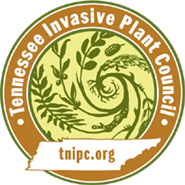Centaurea cyanus L.
Bachelor's Button, Garden Cornflower, Bluebottle, Raggedy Sailors| Category |
|---|
| Forb/Herb |

Description
Erect annual herb, 1.5 m tall, plant covered with loose white trichomes; outer ray florets are blue, 1.5-3 cm long, deeply toothed at apex.Stem
Erect 0.2-1.2 m tall freely branching, pubescent, slender, angled in cross section, whitish in color.Leaves
Alternate, 5-15 cm long, less than 1 cm wide, narrowly lance-shaped or linear, margins entire or slightly toothed, pubescent.Flowers
Numerous solitary heads, 2.5-5 cm diameter, on long peduncle. Ray florets, blue, pink, purple, or white.Fruit
Achene, 3-3.8 mm long, 1.5-2 mm wide, lustrous, purplish-gray in middle, yellowish basally.Images
Photo: Rebekah D. Wallace, University of Georgia, Bugwood.orgMore images of Centaurea cyanus
Life History
3. HabitatFields, pastures, roadsides, and waste sites.
Origin and Distribution
Native to EuropeCornflower can be found in the following states/territories: USA (AL, AR, AZ, CA, CO, CT, DC, DE, FL, GA, HI, IA, ID, IL, IN, KS, KY, LA, MA, MD, ME, MI, MN, MO, MS, MT, NC, ND, NE, NH, NJ, NM, NV, NY, OH, OK, OR, PA, RI, SC, SD, TN, TX, UT, VA, VT, WA, WI, WV, WY), CAN (AB, BC, MB, NB, NF, NS, ON, PE, QC, YT), DEN (GL)
Synonym
Leucacantha cyanus (L.) Nieuwl. & Lunellh2. Management Recommendations
Mechanical Controls
Mechanical methods such as mowing, cutting, and digging will not eliminate hawkweed. Hand-pulling can be effective for small infestations if care is taken to remove as much of the root as possible. Mowing is ineffective because rosettes are so close to the ground. Effective hawkweed management will depend on a program that integrates control methods with restoration techniques to increase the competitive ability of desired species.Herbicidal Controls
Cornflower can be controlled with herbicides. However, proper use of surfactants is necessary to increase the adherence of herbicides to the hairy leaves and stems. Plants should generally be treated when they are in the rosette stage. Effective control has been documented when using a mixture of glyphosate and aminopyralid or glyphosate and clopyralid at the chemical label’s recommended rate.Biological Controls
There are no biological controls currently available.Bibliography
Bryson, C.T. and M.S. DeFelice, eds. Weeds of the South. 2009. University of Georgia Press, Athens. 61 pp.USDA, NRCS. 2010. The PLANTS Database, PLANTS Profile for Centaurea cyanus
http://msdssearch.dow.com/PublishedLiteratureDAS/dh08bb/0901b803808bb5d7.pdf?filepath=ivm/pdfs/noreg/010-50606.pdf&fromPage=GetDoc
